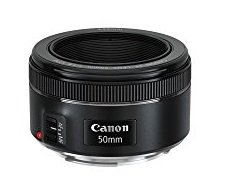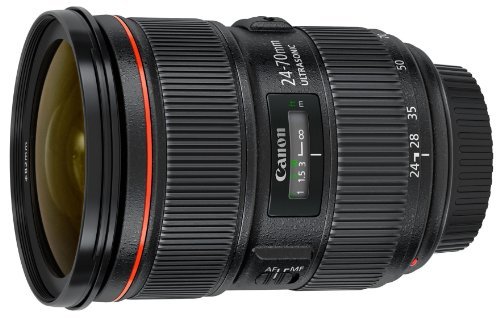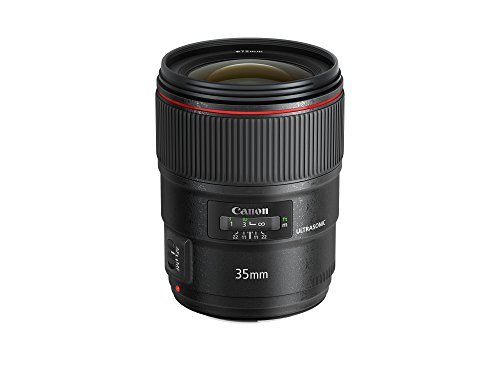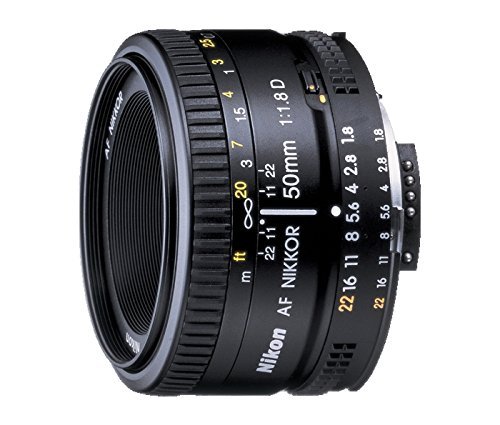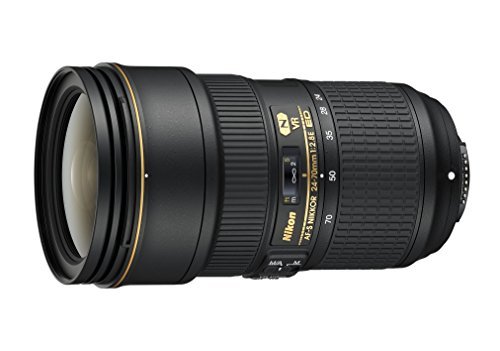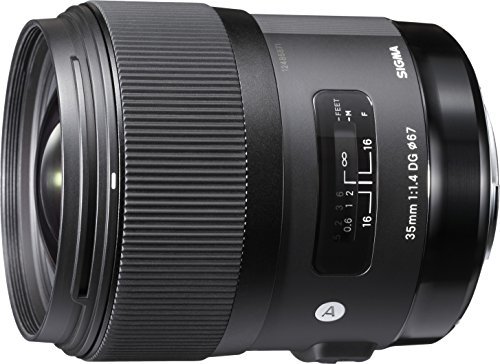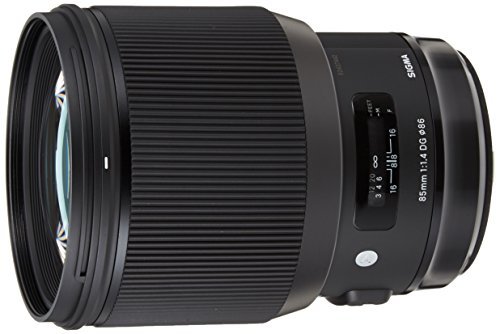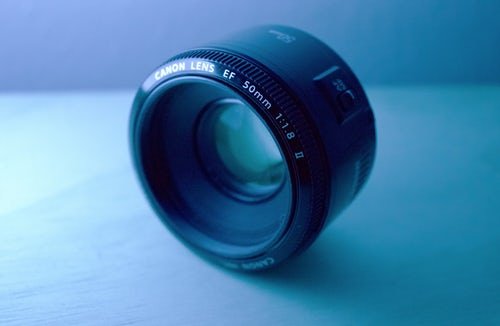Night time photography can be quite a challenge without the right lens. This is one of the major problems many beginner photographers face. With numerous options available online, choosing the right lens is indeed time consuming. So, “which is the best lens for night photography?”
Well, let us answer this in a simple way. Photographers need to know as to what makes a lens perfect for night photography. You need to choose lenses that satisfy the 4 needs – the sharpness, wide aperture, wide focal range and low aberrations.
If you are a beginner, you need to choose a lens that meets the above needs and should also complement the camera you are using.
Night photography is a deep seated passion and photographers are always in look out for creative and technical advancement. Let us, in this article know about the best lenses that are available online for night photography.
1.) Canon EF 50mm f/1.8 STM
If you are looking for a 50mm prime lens for your full frame Canon cameras, this is the lens to choose. The lens is quite popular with night photographers, thanks to the introduction of wide aperture.
The upgrade from Canon came in at the right time when many of its loyal users were badly waiting for one. Being the lowest priced lens from Canon, the Canon EF 50mm f/1.8 STM did produce a lot of smiles.
The Canon EF 50mm f/1.8 STM has the maximum aperture of f/1.8 and uses the STM or the Stepping Motor Technology, which is only available on Canon systems. The mechanism of STM is slower than auto-focus and this is more useful in shooting videos or movies. This kind of lens is very helpful where the photographers need to use smoother auto-focus locks.
One of the important features of this lens is the wide aperture, which is what is needed to get the picture right. The f/1.8 aperture of the 50 mm lens is wide and hence collects a good amount of light. The Canon EF 50mm is a faster when compared to the traditional lenses that come with the kit.
When the aperture of a lens is doubled, it means that the amount of light that gets collected is increased as well. This feature helps when you have to deal with low light conditions. You need not drag the shutter speed anymore (which creates a blur in the images) when you use Canon EF 50mm.
The lens is easy to use as it is light weight and weighs about 160g and only measures 40mm in length. Known as the smallest of all the lenses from Canon, the build quality of the lens is impressive.
The lens feels solid but has a plastic construction. The focusing ring of the lens is narrow but it comes with a rubber grip that helps with easy fingertip operation.
All in all, the Canon EF 50mm f/1.8 STM is a simple and compact lens which is economically priced. Though the price is less, the build quality of the lens is good and can be used with all canon DSLR cameras without hassle.
2.) Canon EF 24-70mm f/2.8 II USM
Known to be one of the best lenses developed by Canon, the EF 24-70mm f/2.8 II USM has won hearts of many photographers. The lens when mounted on any APS-C Camera will work wonders as a portrait lens too. One of the greatest features of this lens is the f/2.8 aperture and of course its build quality.
The EF 24-70mm f/2.8 II USM is a professional grade zoom lens that can be used for full frame and APS-C DSLR s of Canon. The lens features a fast f/2.8 throughout the zoom range and comes with a super spectra coating that protects and increases the life of the lens. The lens uses an ultrasonic motor and comes with a nine blade circular aperture. The lens provides a great silent performance and can be also used for reportage and event photography.
The f/2.8 can be termed as one stop slower when compared to the f/1.4 lenses. But, the lens has an array of features and makes it a must use when you have to shoot in very low light conditions. The lens is a little big and seem bulky to many, as it weighs about 800gms and about 11cms in length.
The EF 24-70mm f/2.8 II USM has an excellent build quality and the focused ring is wide and comes with a good rubber grip band. The lens also includes clear distance scale, which comes in handy for beginner photographers.
The lens also has Ultra low dispersion and super UD and also has some aspherical elements. All these make sure that the lens does not get damaged due to distortions or aberrations. This feature is important for lenses that have a wide aperture.
The lens comes with a protective fluorine coating and hence can be used for outdoor photography, or take shots of landscapes etc, in any kind of light condition.
If you are looking for a lens that provides you with the best picture quality even in dim conditions, this is the one for you. The EF 24-70mm f/2.8 II USM is weather proofed and has a wide aperture.
3.) Canon EF 35mm f/1.4L II USM
If you are looking for a best lens for night photography, Canon EF 35mm f/1.4L II USM will certainly not disappoint you. It is a great standard lens which has a wide aperture of f/1.4 and includes an ultra low dispersion element along with two aspherical elements.
These features of the lens help take care of any chromatic aberrations as they are quite common with lenses with wide aperture.
The lens also includes a sub wavelength and a fluorine coating to suppress ghosting and flares. This also helps to improve the saturation, sharpness and the contrast of the images. The Canon EF 35mm f/1.4L II USM is one formidable piece of tool that is known to have an excellent weather sealing and this ensures that the lens can be confidently use in any climatic condition.
The Canon EF 35mm f/1.4L II USM has a focusing distance indicator and a full time manual focusing override features. These features make it easy to shoot even when the light is dim. One of the interesting features of the lens is the use of “Blue Spectrum Refractive Optics”. This helps to refract the wavelengths of light that are shorter, hence suppressing color fringing and chromatic aberrations.
The lens is perfect to be used for night photography and can also be used for close-up and landscape photography as well. The images have a lot of clarity as the lens has a capacity to capture the most beautiful details, even if they are minute.
If you are one of those photographers who wants to be delighted, it is time you add the Canon EF 35mm f/1.4L II USM to your bag.
4.) Canon EF 11-24mm f/4L USM
The most preferred lens for night sky photography, the EF 11-24mm f/4L USM from Canon has a wide angle lens and boosts of a focal length of 11-24mm, with an excellent angle view. The lens is specially desighed for the full frame systems and has an aperture of f/4. The lens also boosts of high build quality and is known for is amazing performance.
The EF 11-24mm f/4L USM has a weather resistant design and hence photographers can carry it to anywhere they want. The lens is widely used for outdoor, landscape photography and of course for night time photography as well.
The aperture of the lens at f/4 is constant and this helps you maintain the same perspective in all the images. The lens also has a full time manual focusing, which helps you to use the focus ring whenever you like. You can even make some tweaks if you find your camera struggling. This is helpful with low contrast and low light situations.
The EF 11-24mm f/4L USM is considered just perfect for nighttime photography and one can just mount it on a full frame camera or just use it with a tripod. Photographers for sure will have the best time shooting pictures using this lens.
Like other lenses, EF 11-24mm f/4L USM also uses various elements to reduce distortions and aberrations. The lens have air sphere coating and sub –wavelength coating, all of which reduce ghosting and flare to bare minimum. The lens can remain smudge free for years, thanks to the fluorine coating applied.
Now that we have had a look at some of the best lens for night photography, lets us learn a few tips that will help you make a wise choice. The buyers guide will focus on various parameters you need to focus on before you go ahead a purchase a lens online.
Best Nikon Lens for Night Photography
1.) Nikon AF Nikkor 50mm f/1.8D
The Nikon AF Nikkor 50mm f/1.8 D is the F mount lens which is an all time favorite of Nikonians. The 50mm prime lens comes with a wide aperture of f/1.8 and includes a manual focus ring, an aperture ring and also a focus distance indicator.
The lens is priced economically and is known to be very sharp and is the best choice for D700 or a D3 camera. The lens has a fast auto-focus, amazing zoom quality and provides a great performance even when there is low light.
As this is a traditional AF lens, it can be used with almost all the Nikon cameras. Also, the AF Nikkor 50mm f/1.8 D is a full-coverage FX lens and hence can be used to create great work on FX Digital or film. The lens comes with a super integrated coating, which prevents any flares or ghosting.
The manual focusing ring is present with the physical ring on the 50mm lens and this controls the aperture. The AF Nikkor 50mm f/1.8 D is one of those very rare lenses that can be used as reverse mount with the help of a reversal adapter ring and the apertures can still be changed. This way the lens can also be used for macro photography.
But if you wish to use it for night photography, it is its wide f/1.8 aperture feature that comes in handy.
2.) Nikon AF-S Nikkor 24-70mm f/2.8 E ED VR
If you are looking for a stabilized option, the Nikon AF-S Nikkor 24-70mm f/2.8 E ED VR is the one to choose without a second thought. The AF-S Nikkor 24-70mm f/2.8 E ED VR is a proud product of Nikkor which includes the feature of image stabilization.
The lens has a maximum aperture of f/2.8 and the image stabilization is up to “four stops of correction”. Thanks to this, photographers can now use a slower shutter speed when they are hand-holding their camera. The lens also has the option to override the full time manual focusing.
The AF-S Nikkor 24-70mm f/2.8 E ED VR uses “electromagnetic diaphragm mechanism”, which eliminates the aperture lever located at the back of the lens and also provides the photographer with a good control over the diaphragm of the lens.
Nikon has also added the “Vibration Reduction image stabilization technology” to this lens, which is one of the features a number of photographers were waiting for. The lens is a little heavy and the lens filter thread too has been increased from 77mm to 82mm.
An aspherical and an extra low dispersion element have been used in the construction of the lens along with two more dispersion elements that help suppress distortions. Nikon has also used Nano Crystal coating to prevent the lens flare and ghosting. Due to this, the images have rich color and are sharp. Also, the use of fluorine coating makes sure that the front of the lens does not attract dirt and dust.
One of the best features of the AF-S Nikkor 24-70mm f/2.8 E ED VR is the constant aperture of f/2.8. This comes in handy when you need to shoot when the light situations are dull and bad. With this lens, you can be assured of consistency across all the images taken.
If you are looking for a lens of high quality and that has full weather sealing, just go with AF-S Nikkor 24-70mm f/2.8 E ED VR.
Best Sigma Lens for Night Photography
1.) Sigma 35mm f/1.4 Art DG HSM Lens
Sigma is a third party lens manufacturer that is known to manufacture the best of lenses that produce amazing results. The professional level lens meet the needs of various photography levels and the 35mm f/1.4 DG HSM is the very first lens that falls into the category of “art lens”.
The 35mm f/1.4 DG HSM has a large aperture of f/1.4 and hence works great for low light photography. This is one of the reasons why the lens is used for night photography as well. The lens also isolates the subjects effectively from the background, thanks to the field’s shallow depth.
The lenses from Sigma are designed to work without any flaws with APS-C and full frame sensors. While lens with same features from other brands cost a whooping price, the 35mm f/1.4 DG HSM is the cheapest of the group and is priced at $899.
The lens uses a floating mechanism, which makes the close up focusing better. The lens also makes use of four “super low dispersion” glasses elements along with a FLD element which is also called as F low dispersion element. This element functions like fluorite coating. The lens also uses aspherical elements that prevent distortion.
The top of the 35mm f/1.4 DG HSM lens comes with a super multi layer coating which prevents ghosting and produces a much saturated and a sharper image. The use of hyper sonic motor ensures that the auto focus is quiet and of high speed.
While the lens can take in a lot of abuse, it is not sealed using a rubber grip like in other lenses from different brands. So, users will have to watch out for the dust which might reach in between the camera mount and the lens.
2.) Sigma 85mm f/1.4 DG HSM Art Lens
The art lenses form Sigma are quite different to the contemporary and the sports lens introduced by the brand. These lenses are specially designed for professionals and have a focal length of 85mm.
The Sigma 85mm f/1.4 DG HSM Art Lens is also known to be one of the best lenses for night photography and portrait photography. The lens works perfectly in every light condition. This is also known to be the very first of the sigma lenses that was dedicated to full frame mirrorless cameras from Sony.
The lens works on a control algorithm which not only optimizes the autofocus but also increases the data transmission speed. The lens is larger and slightly heavier than the other art lens from Sigma but is of excellent build quality.
The lens is known for its quiet performance, thanks to the use of Hyper Sonic Motor and this is what makes it ideal for video recording as well. The lens is shipped along with a durable soft case and a strap.
The lens has a wide and open aperture, and this provides clear pictures even when the light conditions are really low. Photographers need not drag the shutter or take pain to push the ISO. The lens is mainly designed for a full frame camera, and the maximum aperture of the lens is f/1.4.
This feature ensures that enough light gets captured even when the picture is being taken at dusk. The photographers can be assured of a well exposed picture when using Sigma 85mm f/1.4 DG HSM Art Lens.
The lens is constructed using an aspherical and two super low dispersion elements. This feature helps take care of any spherical aberrations. The lens, like the other art lenses has a multi layer coating which prevents flares and ghosting, due to which the images produce have a rich color.
The Sigma 85mm f/1.4 DG HSM Art Lens offer superlative images and have an amazing build quality. If you are looking for a lens to compliment your Sony E mount camera, this is the one to choose.
Best Lens for Night Photography - Buyer's Guide
If you are planning to buy a lens for night photography, you certainly need to know if you want to capture the stars in the sky or do not have plans to include them in your pictures.
Most often the night photographers who wish to take pictures of the night sky need to pay focus to the weather, the clouds and of course the light.
So, the lens you choose needs to depend on the kind of night photography you wish to do.
Make Use of Fast Lens
To increase the exposure and still capture the stars or other celestial objects in the night sky, you certainly need fast lens. You need to make sure to choose a lens that has a wider aperture, a lens that is f/2.8 or wider than that.
You can as well use a lens that has an aperture of f/4.0. Any lens with the aperture less than these are not ideal for night photography. If you are lucky enough you might have a kit lens that opens up at f/3.5 focal length.
The depth of the field too matters when it comes to using lenses that have wide aperture. You can set the focus at infinity and you will see that everything from the scene will be on the focus you have chosen.
Always Use Wide Angle Lens while Shooting

If you are into night photography for long, you should be aware of Reciprocal Rule by now. You need to choose a lens that has a slow shutter speed or the exposure time. This helps when you are shooting using a handheld camera and helps avoid blur in the pictures taken.
So, for example, you are using a 100m lens, you need to make sure that the shutter speed of that lens is 1/100th of a second.
As per the Reciprocal Rule, a correlation always exists between the longest shutter speed and the focal length. This holds true even when you want to photograph the night sky and the stars. If you want to photograph the sky, you need to choose a wider lens as you can open up the shutter for long.
Photographers can also test out few shutter speeds and then decide which one suits their style of photography.
The SHarpness
Whatever professional photography you are into, you certainly need a sharp lens. But it can be hard for beginners to determine the sharpness of the lens and more. The best way to choose a sharp lens is of course by testing, but it is not practically possible when you are shopping online.
In such a case, you can relay of reviews. You can as well compare the sharpness of one lens to another and then pick the best.
For night photography, you need to pay attention to the image corners, as you will be making use of wide apertures. Such lenses that have wide apertures are mostly less sharp.
The lenses again have a little distortion too and the one which needs a mention when it comes to night photography is coma distortion. This kind of distortion adds little wing like points to the light and hence lens with such a difficulty are not ideal for night photography.
Use the 500 Rule
For those who are not familiar, the 500 Rule is used to avoid blurry images. As per the rule, the longest shutter speed photographers can use to get rid of blurry images is equal to 500 divided by the lens’s focal length.
For example, of the focal length of the lens is 20mm, you can thus use a shutter speed of 25 seconds. So, choose the lens accordingly.
Night photography is one of the most interesting and demanding ways to use the camera and not very lens is suitable for the same. Along with expected difficulties, photographers also need to work with low or no light to create amazing pictures.
The only solution to this is to choose the best lens for night photography online. You can rely on tools like aperture and shutter speed to make a pick.
Let us know have a peek at some of the commonly asked questions about choosing a lens for night photography.
FAQs - Best Lens for Night Photography
What is the best lens for night photography?
While there are a number of amazing lenses available online for night photography, you need to make sure to choose the one with wider aperture. Some of the best lenses ideal for night photography are Nikon AF-S Nikkor 24-70mm f/2.8 E ED VR and Canon EF 11-24mm f/4L USM.
Which aperture is perfect for taking pictures in low light?
If you are planning to take a well-exposed picture, you certainly need to choose a lens that has an aperture that is wide enough to let a lot of light in. You can set the lens at f/1.8 as it lets more light in when compared to f/3.5. This can indeed show a huge difference on the final image.
Can I use a 50mm lens for night photography?
If you are new to photography, you certainly need to have a 50mm lens handy. The 50mm lens form Canon is a fixed prime lens that is sharper and is light weight and is inexpensive at the same time. The biggest advantage of this lens is its wide aperture, which is a must have in low light conditions.
What are the low budget lenses for night photography?
The price of the lenses available for night photography can vary from brand to brand and the features. Some of the lenses you can opt for are Canon 50mm f/1.8, Nikon 50mm f/1.8G AF-S lens, Nikon 35mm f/1.8G AF-S DX and Canon EF 35mm f/2 IS USM Lens.
The above mentioned are some commonly asked questions, but if you have any, do not hesitate to drop a comment below.
Nighttime photography is indeed tricky. Be it photographing the landscapes or the stars at night, using the right lens will certainly pay off your efforts. The first time you take a picture of the night sky or the Milky Way, you will for sure be hooked on to this for life.
Although the lenses used do matter, you need to remember that they are just not everything you need. Well, the hardest part is staying awake and out at night and when you do this, great pictures will for sure follow.

